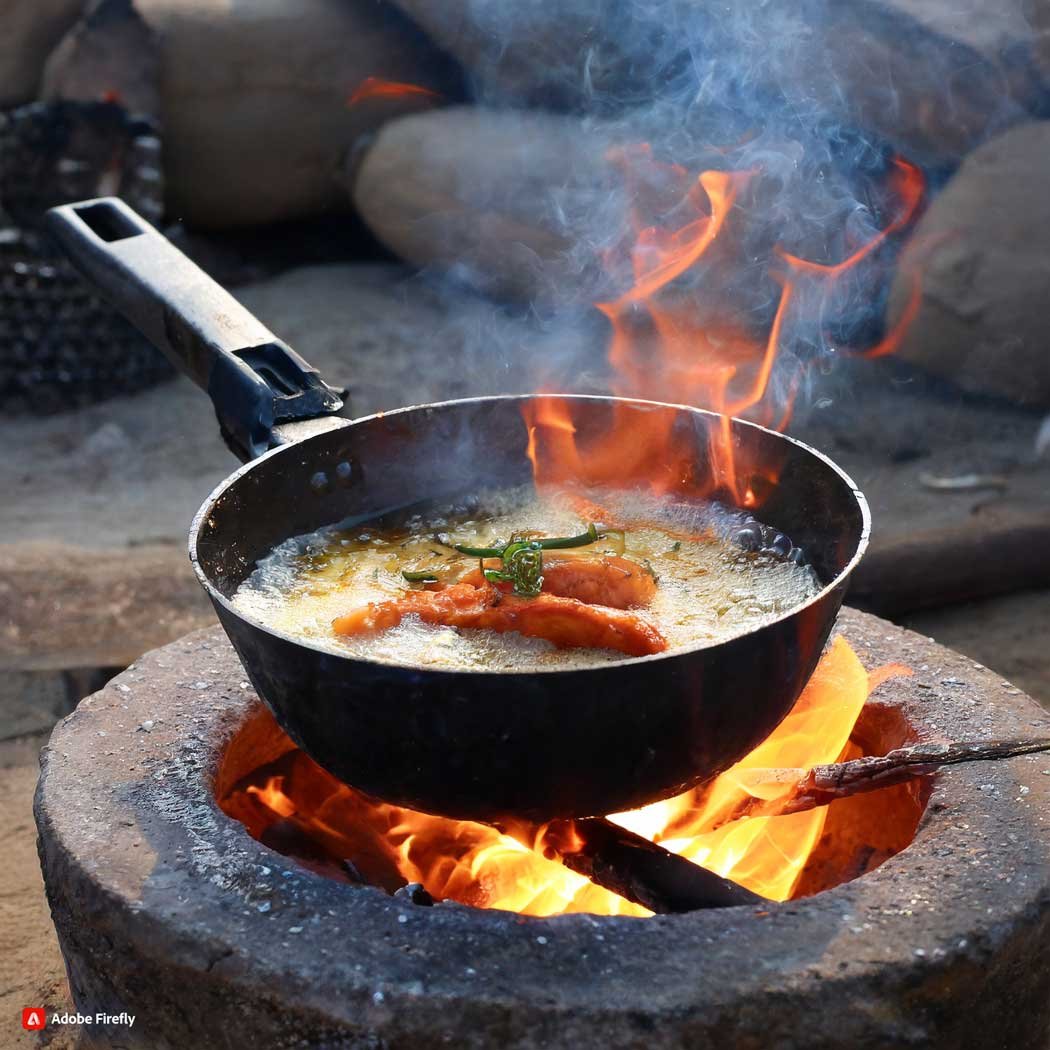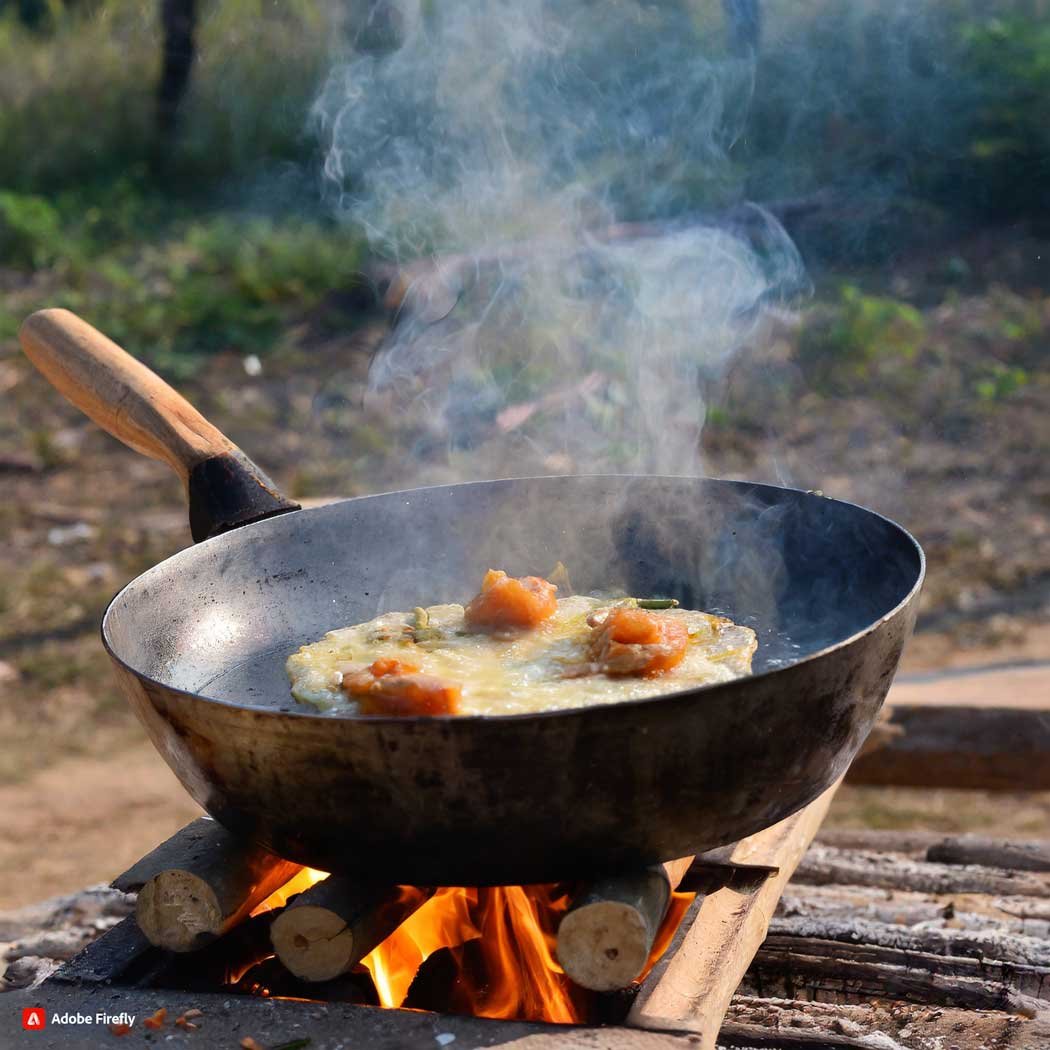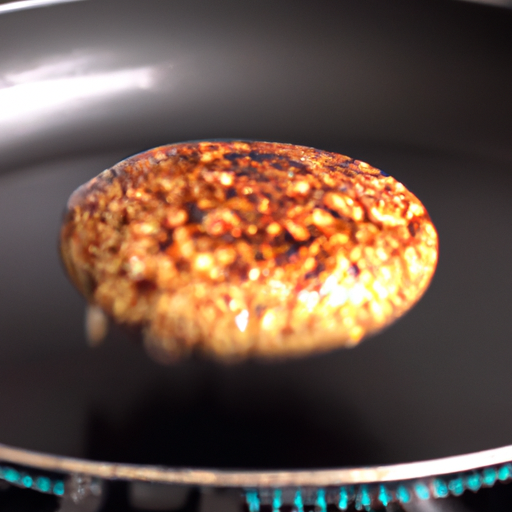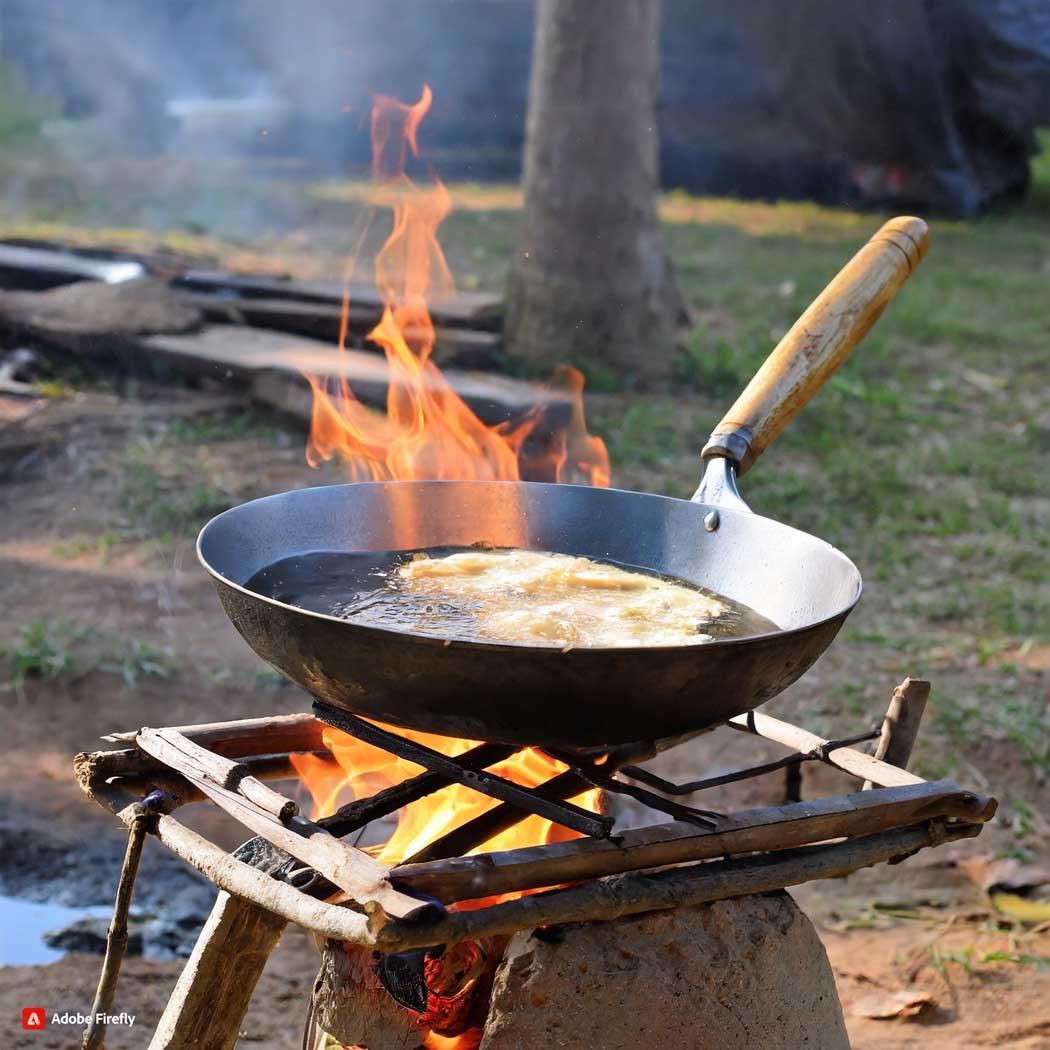Pan-frying is a cooking technique that involves cooking food in a shallow pan with a small amount of oil or fat. It is a versatile and popular method of cooking that can be used for a variety of foods, from vegetables to meats. However, mastering the art of pan-frying requires not only skill and technique, but also the right tools. In this beginner’s guide, we will discuss the essential tools needed for perfect pan-frying.
The Essential Tools for Perfect Pan-Frying: A Beginner’s Guide
The first and most important tool for pan-frying is a good quality pan. A heavy-bottomed pan, such as a cast iron or stainless steel pan, is ideal for pan-frying as it distributes heat evenly and retains it well. Non-stick pans are also a popular choice, but they may not be suitable for high heat cooking. It is important to choose a pan that is the right size for the amount of food you are cooking. A pan that is too small will overcrowd the food and prevent it from browning properly, while a pan that is too large will cause the oil to spread out too thinly and result in uneven cooking.

Next, you will need a spatula or tongs for flipping and turning the food while it is cooking. A spatula with a thin, flat edge is ideal for delicate foods such as fish, while tongs are better for larger and heavier items like chicken breasts. It is important to choose a spatula or tongs with a heat-resistant handle to prevent burns. Read easy Healthy Lunch for Weight Loss.
Another essential tool for pan-frying is a thermometer. This is especially important when cooking meats, as it ensures that they are cooked to the correct internal temperature. Overcooked meat can be tough and dry, while undercooked meat can be a health hazard. A digital thermometer is the most accurate and convenient option, as it gives an instant reading and can be used for both thick and thin cuts of meat.
A splatter guard is also a useful tool for pan-frying. It is a mesh screen that is placed over the pan to prevent hot oil from splattering and causing burns. This is especially important when cooking foods that release a lot of moisture, such as bacon or chicken. A splatter guard also helps to keep your stovetop clean and prevents oil from getting all over your kitchen.

In addition to these essential tools, there are a few other items that can make pan-frying easier and more efficient. A paper towel or clean kitchen towel is useful for patting dry foods before cooking. This helps to remove excess moisture, which can prevent the food from browning properly. A pair of kitchen shears can also come in handy for trimming and cutting food while it is cooking.
Lastly, having a good quality oil or fat is crucial for successful pan-frying. Different oils have different smoke points, which is the temperature at which they start to burn and produce smoke. It is important to choose an oil with a high smoke point, such as canola or vegetable oil, for pan-frying. Butter and olive oil have lower smoke points and are better suited for low to medium heat cooking.
In conclusion, mastering the art of pan-frying requires not only skill and technique, but also the right tools. A good quality pan, spatula or tongs, thermometer, splatter guard, paper towel, kitchen shears, and oil are all essential for perfect pan-frying. With these tools in hand, you can confidently cook a variety of delicious and perfectly cooked dishes using the pan-frying method. So go ahead and start experimenting with different recipes and techniques, and soon you will become a master of pan-frying.
Mastering the Art of Temperature Control in Pan-Frying: Tips and Tricks

Pan-frying basics is a cooking technique that involves cooking food in a shallow pan with a small amount of oil or fat. It is a popular method for cooking a variety of foods, from meats and vegetables to eggs and even fruits. While it may seem like a simple and straightforward cooking method, mastering the art of pan-frying requires more than just tossing food in a pan and turning up the heat. One of the key elements to achieving perfectly cooked and flavorful pan-fried dishes is temperature control.
Temperature control is crucial in pan-frying because it affects the texture, flavor, and overall outcome of the dish. If the temperature is too low, the food will take longer to cook and may end up being soggy or greasy. On the other hand, if the temperature is too high, the food may burn on the outside while remaining undercooked on the inside. Therefore, understanding and mastering temperature control is essential for any home cook looking to elevate their pan-frying skills.
The first step in mastering temperature control in pan-frying is choosing the right pan. A heavy-bottomed pan, such as a cast-iron or stainless steel pan, is ideal for pan-frying as it distributes heat evenly and retains it well. Non-stick pans are not recommended for pan-frying as they do not allow for proper browning and can cause the food to stick and burn. It is also important to choose a pan that is the right size for the amount of food you are cooking. A pan that is too large will result in uneven cooking, while a pan that is too small will overcrowd the food and cause it to steam instead of fry. Read The Master Sauce Book.
Once you have the right pan, the next step is to preheat it properly. Preheating the pan is crucial in achieving the desired temperature for pan-frying. It allows the pan to heat up evenly, ensuring that the food cooks evenly as well. To preheat the pan, place it on the stove over medium-high heat for a few minutes. You can test if the pan is hot enough by sprinkling a few drops of water on it. If the water sizzles and evaporates immediately, the pan is ready for cooking.
Now that the pan is hot, it is time to add the oil or fat. The type of oil or fat you use for pan-frying can also affect the temperature and outcome of the dish. Oils with a high smoke point, such as canola, vegetable, or peanut oil, are best for pan-frying as they can withstand high temperatures without burning. Butter and olive oil, on the other hand, have lower smoke points and are better suited for low to medium heat cooking. It is important to add the oil or fat to the pan before it gets too hot to prevent it from burning.
As you add the food to the pan, it is important to maintain the temperature. This can be achieved by adjusting the heat as needed. If the food is browning too quickly, lower the heat. If it is taking too long to cook, increase the heat slightly. It is also important to avoid overcrowding the pan, as this can cause the temperature to drop and result in steaming instead of frying. Cook the food in batches if necessary, and keep an eye on the temperature throughout the cooking process.
In conclusion, mastering the art of temperature control in pan-frying is essential for achieving perfectly cooked and flavorful dishes. It starts with choosing the right pan and preheating it properly, followed by adding the oil or fat and maintaining the temperature throughout the cooking process. With these tips and tricks, you can elevate your pan-frying skills and create delicious and impressive dishes in no time.
Elevating Your Pan-Fried Dishes: Creative Seasoning and Flavor Combinations
Pan-frying is a cooking technique that involves cooking food in a shallow pan with a small amount of oil or fat. It is a popular method of cooking because it allows for quick and easy preparation of a variety of dishes. However, many people tend to stick to the same basic seasoning and flavor combinations when pan-frying, resulting in repetitive and uninspired dishes. In this article, we will explore how to elevate your pan-fried dishes by using creative seasoning and flavor combinations.

The first step to mastering the art of pan-frying is to understand the importance of seasoning. Seasoning is the process of adding herbs, spices, and other flavorings to enhance the taste of food. When it comes to pan-frying, seasoning is crucial as it adds depth and complexity to the dish. It is essential to season your food before, during, and after cooking to ensure that the flavors are evenly distributed.
One way to elevate your pan-fried dishes is to experiment with different herbs and spices. Instead of using the same old salt and pepper, try using a combination of herbs such as thyme, rosemary, and oregano. These herbs not only add flavor but also bring a beautiful aroma to your dish. You can also try using spices like cumin, paprika, or chili powder to add a kick of heat to your pan-fried dishes. The key is to be adventurous and experiment with different combinations to find what works best for you.
Another way to elevate your pan-fried dishes is to use marinades. Marinades are a mixture of herbs, spices, and other ingredients that are used to flavor and tenderize meat, fish, or vegetables. Marinating your food before pan-frying can add a whole new dimension of flavor to your dish. For example, marinating chicken in a mixture of soy sauce, honey, and garlic can result in a deliciously sweet and savory dish. You can also try using yogurt-based marinades for a tangy and creamy flavor.
In addition to herbs, spices, and marinades, you can also elevate your pan-fried dishes by using different types of oils. Instead of using regular vegetable oil, try using oils like sesame, coconut, or avocado oil. These oils not only add a unique flavor to your dish but also have health benefits. For example, sesame oil has a nutty flavor and is rich in antioxidants, while coconut oil has a subtle sweetness and is known for its anti-inflammatory properties.
Furthermore, you can also add a touch of acidity to your pan-fried dishes to balance out the flavors. Lemon juice, vinegar, or even a splash of wine can add a tangy and refreshing taste to your dish. For example, a squeeze of lemon juice over pan-fried fish can brighten up the flavors and make the dish more appetizing.
Lastly, don’t be afraid to add some sweetness to your pan-fried dishes. Adding a touch of sweetness can help balance out the flavors and add depth to the dish. You can use ingredients like honey, maple syrup, or even fruit preserves to add a hint of sweetness. For example, a drizzle of honey over pan-fried pork chops can create a deliciously sweet and savory dish.
In conclusion, mastering the art of pan-frying is all about being creative with your seasoning and flavor combinations. Don’t be afraid to experiment with different herbs, spices, marinades, oils, and even acidity and sweetness. The key is to find a balance of flavors that work well together and elevate your pan-fried dishes to a whole new level. So next time you’re in the kitchen, don’t be afraid to get creative and take your pan-fried dishes to the next level.
Q&A for Pan-frying basics
1. What is the key to achieving a crispy and evenly cooked pan-fried dish?
The key to achieving a crispy and evenly cooked pan-fried dish is to make sure the pan is hot enough before adding the food. This will create a nice sear on the outside while keeping the inside moist and tender.
2. How do you prevent the food from sticking to the pan while pan-frying?
To prevent food from sticking to the pan while pan-frying, make sure to use enough oil or butter to coat the bottom of the pan. You can also use a non-stick pan or add a small amount of flour or cornstarch to the food before frying.
3. Can you reuse the oil after pan-frying?
Yes, you can reuse the oil after pan-frying, but it is important to strain it through a fine-mesh sieve to remove any food particles. It is also recommended to store the oil in an airtight container in the refrigerator and use it within a few weeks.
Conclusion – Pan-frying basics
In conclusion, mastering the art of pan-frying requires practice, patience, and attention to detail. It is a versatile cooking technique that can be used to create a variety of delicious dishes. By understanding the basics of heat control, oil selection, and proper flipping techniques, one can achieve perfectly crispy and flavorful results every time. With time and experience, one can become a master of pan-frying and elevate their cooking skills to new heights. So, don’t be afraid to experiment and have fun with this cooking method, and soon you’ll be able to create mouth-watering pan-fried dishes like a pro.
Please follow us on linkedin. You can learn all best canadian food recipes you can check our Culinary 1TouchFood Youtube and Telegram 1TouchFood page. Don’t forget Fighting Obesity Magazine and Radio Cooking.

